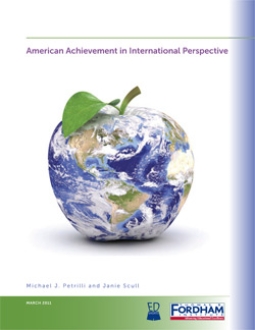The latest results of the Programme for International Student Assessment (PISA) garnered all the usual headlines about America’s lackluster performance and the rise of competitor nations. And to be sure, the findings—that America’s fifteen-year-olds perform in the middle of the pack in both reading and math—are disconcerting for a nation that considers itself an international leader, priding itself on its home-grown innovation, intellect, and opportunity.
But that’s not the entire story. Particularly among other industrialized and advanced nations, the U.S. still has the upper hand in one critical measure—size. In this brief analysis, we analyzed the data to compare the PISA performance of the U.S. and thirty-three other nations in the Organization for Economic Cooperation and Development.
Among the findings:
- In raw numbers, the U.S. produces many more high-achieving students than any other OECD nation—more high-achievers than France, Germany, and the UK combined (both in reading and in math).
- On the downside, in raw numbers, the U.S. also produces many more low-achieving students (both in reading and in math) than any other OECD nation, including Mexico and Turkey.
There are a number of other interesting tidbits as well.





